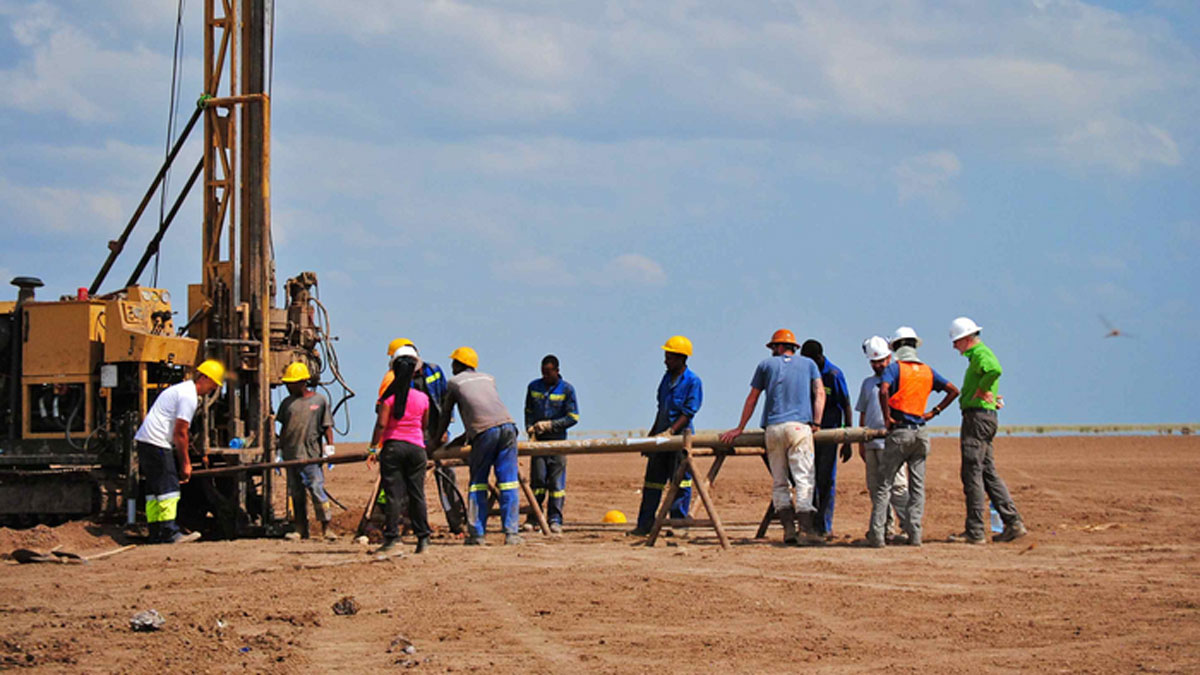We owe much of our understanding of the human family tree to decades of fossil finds in East Africa. But whereas researchers know quite a lot about hominin bones, the environments our ancestors and evolutionary cousins inhabited are a different story—despite East Africa’s anthropological significance, climate records for the region have remained stubbornly sparse.
Now, researchers have produced what they say is one of the first-ever continuous climate records from a proven habitat of ancient Homo sapiens.
The new 620,000-year history of hydroclimate at Chew Bahir, a playa lake in southern Ethiopia, showed that the local climate swung dramatically between wet and dry extremes. Shifts in the intensity and frequency of those swings seem to have occurred alongside, and perhaps even driven, major events in hominin evolution. The results were published in Nature Geoscience.
“This paper offers this incredibly detailed record for the last 620,000 years,” said paleoanthropologist Rick Potts of the Smithsonian National Museum of Natural History, who was not involved in the study. Comparing it with results from other sites could help scientists “get a handle on the…local evolutionary picture versus [the] broad regional record for eastern Africa in general.”
“This Is Doable, So Let’s Go and Do It.”
Researchers have been looking for links between climate and human evolution for decades, said Potts. But while ice cores and seafloor sediments preserve detailed climate records on a planetary scale, they don’t say much about what was going on in the specific environments where hominins evolved.
“In order to address the big questions of human evolution and the role that climate played in it, you would need a terrestrial record from as close as possible [to early human habitats],” said Verena Foerster, faculty at the Institute of Geography Education at the University of Cologne and lead author of the new paper. “That was a great need. ‘Well,’ we said, ‘This is doable, so let’s go and do it.’”
Chew Bahir both preserves intact lake sediments, which make good climate records, and is close to significant fossil finds in the nearby Omo-Turkana basin. It’s also a rather difficult place to do science. Foerster remembers struggling to sleep through the heat of the day between the nights she spent coring. Drill time was expensive, she said, so she and her colleagues worked around the clock in shifts despite the heat—and the bugs.
“The mosquitoes basically had the best time of their entire lives because a 40-person science crew and drillers arrived and stayed there for 6 weeks,” she recalled.
To turn the two 280-meter-long cores they recovered from Chew Bahir into a climate record, the researchers measured the amount of potassium in each layer of sediment. The chemical reaction that traps potassium in sediment goes faster in saltier water, so more potassium tends to get trapped in lake sediments during dry periods when salinity is higher.
Climate Chaos and Human Evolution
The new data revealed that Chew Bahir’s Pleistocene climate was marked by strong, abrupt swings between wet and dry conditions. Shifts in the frequency and intensity of these swings seem to have gone hand in hand with major transitions in human evolution.
The new data revealed that Chew Bahir’s Pleistocene climate was marked by strong, abrupt swings between wet and dry conditions. Shifts in the frequency and intensity of these swings seem to have gone hand in hand with major transitions in human evolution—a finding that hints that climate may have driven our development as a species.
Chew Bahir’s climate 620,000 years ago was wet and mostly stable, punctuated by a handful of dry periods that each lasted about a thousand years. The team thought this pattern would have fractured early human habitats and isolated small groups, which could have driven the increase in anatomical diversity of hominins seen during this time.
Then, starting about 275,000 years ago, the swings between wet and dry conditions grew more frequent and intense. This chaotic climate would have changed too swiftly for biological evolution to keep pace—but cultural innovation could have. This period roughly corresponds to the emergence of better tools, long-distance transport, and symbolic use of pigment among local Homo sapiens populations.
It wasn’t until about 60,000 years ago that Chew Bahir’s climate started to dry out, becoming something closer to the parched playa it is today.
Beyond “N Equals One”
The new data contribute an important record of climate in a known human habitat, said Potts, and the paper presents some promising hypotheses. But, he said, “it’s not been conclusively proven” that climate was a causal driver in human evolution. “And that’s despite my own hypotheses that I put out there!”
Tyler Faith, a paleobiologist at the University of Utah, also praised the new “fantastic climatic and environmental records,” but echoed Potts’s caution. Testing hypotheses about human evolution is challenging because we only evolved once, said Faith. “One big step that needs to happen is to really start looking at big scales—not just what’s happening here, but everywhere. And we need these individual [climate] records to do it,” he said. Treating humans as just one species among many that evolved in Africa could also help “offset the N equals one problem,” he added.
For her part, Foerster was just as excited about what the new record could reveal about the future as it might one day tell us about the past.
She and her colleagues are using the dramatic climate swings at Chew Bahir as a case study to understand what happens when terrestrial climates hit “tipping points,” she said. “At a time where we have anthropogenic climate change, this is even more important…how even without the influence of humans, the system responded extremely sensitively to small changes.”
—Elise Cutts (@elisecutts), Science Writer

